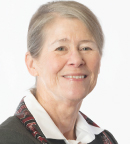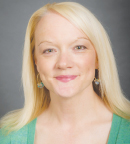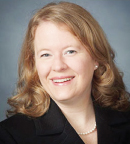
Jan Probst, PhD
Despite growing national awareness of health-care inequities, the plight of rural Americans diagnosed with cancer has persistently remained inadequate. Speaking with The ASCO Post, Jan Probst, PhD, Professor at the Arnold School of Public Health, University of South Carolina, Columbia, noted, “We have not made progress in addressing the health needs of patients with cancer in rural areas. According to a Centers for Disease Control and Prevention analysis,1 although cancer incidence rates are lower in rural counties, death rates are higher. Two types of gaps create access barriers: financial issues on the part of the patient and, relatedly, absence of providers.”
Health Interest of Rural Populations
From 2000 to August 31, 2018, Dr. Probst held a leadership role at the South Carolina Rural Health Research Center (currently renamed the Rural and Minority Health Research Center). For the past 18 years, this center has focused on the problems experienced by vulnerable populations, with a particular focus on rural minorities and impoverished groups. “Before we undertook this work, groups such as ‘rural African Americans’ simply weren’t studied, as they were thought to have identical population-based challenges as African Americans in urban communities, which was proven wrong. For example, urban dwellers have much more access to hospitals and public transportation,” stated Dr. Probst.
A Snapshot of Rural Hospital Closings Since 2010
- Most closures (77%) occurred in the South. Texas accounted for 22% of the closures between 2013 and 2017, more than the entire Midwest (11%) combined.
- The hospitals that closed were also predominantly for-profit designated Medicare-dependent hospitals.
- A total of 64 rural hospitals closed between 2013 and 2017, more than twice as many as the previous 5-year period.
- Rural hospitals in Medicaid-expansion states were far less likely to close than those in states that had not expanded Medicaid as of April 2018.
Source: Bryant M.4
In the 1980s, when the Centers for Medicare & Medicare Services instituted the prospective payment system for hospitals, it was decided that payment for diagnosis-related groups in rural areas would be 25% less than for patients in the urban setting.2 “It is not a fact-based number; it was essentially extrapolated out of thin air,” according to Dr. Probst. “Consequently, there was a wave of hospital closings during the 1980s. In reaction, the Federal Office of Rural Health Policy was created within the Department of Health and Human Services, specifically to look after the health interests of rural populations.”
New Wave of Hospital Closings
As rising health-care costs drain limited resources, the most vulnerable areas are affected. The North Carolina Rural Health Research Program reported 89 rural hospital closures from 2010 to the present. “In 2017, JAMA published a map that indicates the spots with the highest rate of cancer mortality, and for the most part, it’s in Appalachia, the Deep South, and
We have not made progress in addressing the health needs of patients with cancer in rural areas.— Jan Probst, PhD
Tweet this quote
Indian reservations.3 This new wave of hospital closings will have another unintended consequence: reducing any early detection screening program that is offered in the hospital setting,” said Dr. Probst.” She added, “Hospital closures are generally followed by the departure of physicians and other skilled health-care providers from the community.” (For more on rural hospital closures, see sidebar.4)
Glimpse at Demographics
Nearly one-fifth of the nation’s population resides in rural areas, yet a 2015 ASCO workforce analysis found that just 3% of medical oncologists practice there. In a 2015 review in the journal, Oncology, researchers reviewed 97 studies and research articles and coalesced the findings into a comprehensive document.5 The paper’s lead author, Mary Charlton, PhD, Assistant Professor of the University of Iowa College of Public Health, Iowa City, explained that the multidisciplinary structure of cancer care proves problematic for many rural patients. “Depending on the stage and site, patients with cancer require expensive treatments from multiple providers. Radiation and chemotherapy generally require several visits, and there are instances when the patient can’t receive both treatments in the same city, forcing them to travel long distances,” she noted.

Mary Charlton, PhD
Dr. Charlton stressed that low socioeconomic status is the primary barrier to care. “Rural Americans, on average, have lower yearly income than their urban counterparts and less access to health insurance,” she continued. “With the steady decline in manufacturing employment in the past couple of decades, many rural residents are self-employed in agriculture or work for small businesses that do not offer health benefits. The Affordable Care Act attempted to address this issue, but many of the states with the highest concentration of rural residents did not participate in Medicaid expansion, leaving people caught in the no-coverage gap.”
Besides the unmet material needs, patients with cancer have psychosocial issues that are often not sufficiently met in rural areas because of the dearth of social workers and providers of mental health care. Dr. Charlton said that rural physicians report greater difficulty obtaining mental health services for their patients than urban physicians. One study Dr. Charlton reviewed detailed more of these mental health difficulties in this population.6 “They found that rural survivors of cancer experienced poorer mental health functioning, as well as greater symptoms of anxiety, depression, and emotional distress, than urban survivors,” said Dr. Charlton.
Outreach Programs
Teleoncology uses audiovisual conferencing technology for oncologists to remotely see their patients. In theory, this technologic outreach tool has the potential to overcome many of the physical access barriers that rural patients with cancer face. Dr. Probst commented that telemedicine is not used in rural cancer care to the same extent as it is for treatment of other medical conditions, but its use could be expanded, given the right type of structure and deployment.
[In one study], rural survivors of cancer experienced poorer mental health functioning, as well as greater symptoms of anxiety, depression, and emotional distress, than urban survivors.— Mary Charlton, PhD
Tweet this quote
She explained that a learning model for community-based physicians might be more applicable than the traditional telemedicine model. The ECHO (Extension for Community Healthcare Outcomes) project model has been used successfully for treating difficult conditions across rural communities. “This is a grand-rounds, skill-building approach linking a central site to outlying physicians, who can discuss the management of complex cases through Internet-based Web conferencing,” said Dr. Probst.
According to Dr. Probst, this model originated in New Mexico to help local physicians treat hepatitis C, but it is similarly applicable to cancer management. “The MD Anderson Cancer Center is apparently engaged in building an ECHO project for cancer. The issue, of course, is that direct telemedicine services are billable; learning collaboratives are not,” she said.
Public-Private Collaboration to Improve Access to Care
In an effort to make telemedicine a functional reality in rural areas, the National Cancer Institute (NCI) and the Federal Communications Commission (FCC) partnered in a project titled Linking & Amplifying User-Centered Networks through Connected Health (LAUNCH): A Demonstration of Broadband-Enabled Health for Rural Populations in Appalachia. In 2017, the two agencies convened a public-private collaboration that included the University of Kentucky Markey Cancer Center, Lexington.

Robin Vanderpool, DrPH
“The NCI and FCC’s collaboration seeks to address the unmet cancer care needs in an area that experiences what we call the double burden: high cancer incidence and mortality and low broadband connectivity. As an NCI-designated cancer center serving the target area of Appalachia, we were asked to join the LAUNCH demonstration project,” said Robin Vanderpool, DrPH, Associate Professor, University of Kentucky College of Public Health and Director, Community Outreach and Engagement at Markey.
Dr. Vanderpool told The ASCO Post, “One of the President’s Cancer Panel’s recommendations was improving connected cancer care. Half of our patients at Markey come from rural areas in eastern Kentucky; after receiving care in Lexington, patients return home to their rural communities up to 2 to 4 hours away and may feel disconnected from their oncology care team. In addition, their communities may not be well connected to broadband and/or may have low Internet adoption. Being part of the demonstration project offered us the opportunity to follow up on our rural patients’ care more proactively, particularly through connected health technologies.”
Dr. Vanderpool continued: “For instance, patients can fill out their distress monitoring symptoms on a piece of paper, take a picture, and text it to us through the provider system we have at Markey. We can then monitor them with social workers and physicians. That’s a low-tech approach, but we can work all the way up to remote sensors that can measure a patient’s oxygen levels, blood pressure, weight, and other vital signs. This information is sent into our computer system to be processed and acted on immediately if there is an acute problem or a trend indicating increasing levels of distress.”
This collaboration will allow us to connect the underserved population to resources that can help manage their symptoms associated with cancer treatment….— Robin Vanderpool, DrPH
Tweet this quote
In rural mountainous areas such as Appalachia, broadband access is challenging, Dr. Vanderpool explained. Efforts to connect these broadband dead zones are a work in progress. “We’ve gotten satellite Internet providers interested in the project. And some of the telecommunication cooperatives in our area are already partnering with the Veterans Administration (VA) and the local library. So, veterans can access the library’s free telehealth services, which connect them with providers at the VA in Lexington,” shared Dr. Vanderpool.
She noted that this free communication system allows individuals in rural areas to be proactive about their health care and gives connected physicians the ability to steer patients to the nearest clinic, if urgent care is needed, or provide patient education in real time, saving a long-distance trip to Lexington. “The services in the demonstration project are about access to continuity of high-value care. We’re out in the field talking to patients and their loved ones,” noted Dr. Vanderpool. “There
MORE ON RURAL CANCER CARE
For more information on rural cancer care, see “Stemming the Growing Cancer Crisis in Rural Appalachia,” in the September 25, 2017, issue of The ASCO Post.
are, of course, some computer-shy patients who don’t necessarily want to be connected. They’d rather use an intermediary, and in that case, we have a program called Kentucky Homeplace, which provides community health workers to visit people at home and become that trusted link to the connected system. This collaboration will allow us to connect the underserved population to resources that can help manage their symptoms associated with cancer treatment, leading to an improved quality of life,” said Dr. Vanderpool. ■
DISCLOSURE: Drs. Probst, Charlton, and Vanderpool reported no conflicts of interest.
REFERENCES
1. Centers for Disease Control and Prevention: News CDC Report shows deaths from cancer higher in rural America. July 2017. Available at www.cdc.gov/media/releases/2017/p0706-rural-cancer-deaths.html. Accessed November 7, 2018.
2. Cromwell J, Mitchell JB, Calore KA, et al: Sources of hospital cost variation by urban-rural location. Med Care 25:801-829, 1987.
3. Mokdad AH, Dwyer-Lindgren L, Fitzmaurice C, et al: Trends and patterns of disparities in cancer mortality among US counties, 1980-2014. JAMA 317:388-406, 2017.
4. Bryant M: GAO: Rural hospital closures increasing, South hardest hit. Healthcare Dive, October 2, 2018. Available at www.healthcaredive.com/news/gao-rural-hospital--closures-increasing-south-hardest-hit/538604. Accessed November 7, 2018.
5. Charlton M, Schlichting J, Chioreso C, et al: Challenges of rural cancer care in the United States. Oncology (Williston Park) 29:633-640, 2015.
6. Naughton MJ, Weaver KE: Physical and mental health among cancer survivors: Considerations for long-term care and quality of life. N C Med J 75:283-286, 2014.

